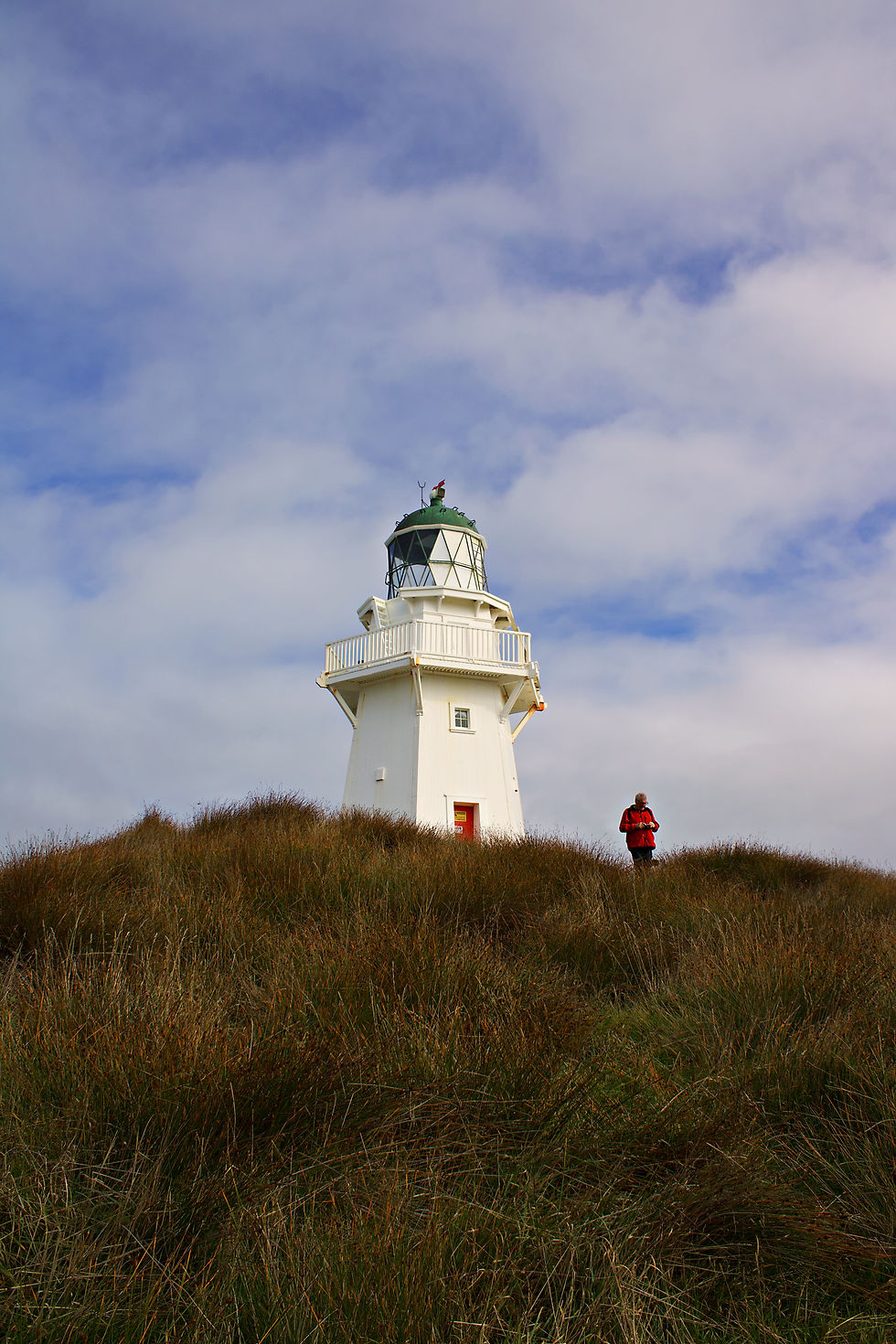Back in the 1960’s the Rolling Stones named Invercargill the arsehole of the world, more recently it’s been crowned the winner of the much anticipated “New Zealand’s shit town of the year” competition, proving that Invercargill is nothing if not consistent.
In reality, it was much like many New Zealand towns; colonial period architecture shielded from view by the awning lined high street, the same range of shops and basic cafes selling the same old things - all of it a difficult sprawling mess, hard to navigate without a car. It was fine as far as towns went, we’d definitely visited worse and anyway, you don’t come to Invercargill for the town itself but for the places town adjacent, like Demolition World.
Demolition World is what happens when you have a hoarder manage a salvage yard. It’s not what you might imagine, knick knacks, antiques and assorted crap artfully stacked up in hard to navigate, dangerously precarious piles - although it is that too - it’s reclaimed buildings, structures, antique carriages and vintage cars. There's mannequins getting married in a rebuilt church; old time-y doctors office completed with strange machines, a maze of streets that meander through, a time travel village from another dimension; it’s quirky, creepy and pretty much everything I could have hoped for. I loved it.
There’s something thrilling about exploring such a weird and wonderful place, it felt as if we should quietly sneak around despite being fully welcomed in by the owner. Maybe it’s the feeling of being watched by hundreds of flat mannequin eyes, or maybe it was just the sensory overload with infinite stacks of objects to look through, new and bizarre scenes around every corner - all rife with chickens. I forgot to mention that, the place also happened to be over-run with chickens. After a thorough exploration checking out all the nooks and crannies it was time to head off before I decided to move in.
Our next port of call was Bluff, the most southern town in NZ famous for its Oysters and the fact your car would be broken into if you left it in the ferry carpark for too long. When Ben and I first came to New Zealand we’d set ourselves a goal, to travel from the the very top at Cape Reinga to the most southern point at Bluff, and despite finding out the Bluff isn’t actually the most southern point at all we decided to go anyway. It was a bit anticlimactic, the town itself seemed run down and way past it’s prime. So there we sat, in a small blustery carpark overlooking the sea, next to a signpost like the one at Cape Reinga, drinking a cup of tea and feeling disappointed. All that was left was to get some oysters.

Reputedly the best oysters worldwide, Bluff oysters can only be harvested from March to May due to the fact they are collected from the last wild oyster fishery. At a local fish, chip and oyster shop, we brought 12 grade A oysters for the reasonable price of $30. Ben described them as “Salty, delicate, fresh and unctuous.” My own description “horribly salty congealed goo” was far less favourable. As I already knew that oysters are not for me, I’d gone ahead and ordered a fillet of green-bone, fried in traditional batter - my personal winner for the best “fish and chip” fish in NZ. Ben happily devoured the remaining 11 oysters without complaint, despite continuously saying he was going to save some for later.
Although Invercargill wasn’t half as bad as we’d been led to believe we still didn’t plan on hanging around for long (apart from spending more time at the beach or spending more money visiting Transport World, we'd ran out of things we wanted to do) so after two days we charted our next route and headed off towards the Catlins, an area of New Zealand famous for its breathtaking scenery and rare wildlife.
Our first stop, a popular free camping spot in Fortrose was unfortunately windswept and bleak. Despite the slate grey skies and freezing winds stinging his cheeks, Ben made the most our time here and ventured out to the sea for some successful fishing. Later, as the sun set, black swans settled on the waves doing their own foraging before they took to the skies and flew away.
From here it was a short drive to Waipapa, where a picturesque small lighthouse proudly sits upon a hill overlooking the bay below. We mainly came due to rumours that a rare New Zealand sea lion frequents this spot and we wasn’t disappointed. When we gingerly made our way down to the rocky beach below the lighthouse, there she sat, sunning herself surrounded by dozens of seagulls.

Mission completed it was off to Slope point, the real most southern spot in New Zealand.
It was a short twenty minute walk through muddy slippery fields of sheep to get to Slope Point and it was underwhelming to say the least. The landscape was stunning in a rough untamed way, but the sign itself was so small, two badly painted fence posts with a yellow placard bolted on. So, the sign was a let down but in the grand scheme of things it didn’t matter; we’d completed what we’d set out to do and besides, there was still so much to explore.
Trip date: April 2023

Next up : Wildlife spotting in Curio Bay






















May not be epic in itself G but as an achevement for you two (and the great name of the combined Phillips/Robins Families, it's truly amazing. Keep it up x